Subaru has long been synonymous with rugged reliability and all-weather capability, especially in regions plagued by harsh winters.
For decades, Subaru’s engineering philosophy has centered around producing vehicles that can withstand some of the most challenging driving conditions on the planet — icy roads, deep snow, freezing rain, and bone-chilling temperatures.
The company’s hallmark symmetrical all-wheel-drive system, combined with boxer engines and elevated ground clearance, has earned Subaru a devoted following among drivers who demand safety, stability, and performance when the mercury drops and the roads become treacherous.
However, as with any brand, not all Subaru models share the same aptitude for winter. Some shine as champions of cold-weather driving, while others struggle or falter in snowy and icy environments due to their design, drivetrain, or feature set.
Understanding which Subaru cars love cold weather and which ones don’t is essential for anyone living in a region with significant winter weather or planning a trip to colder climates. The importance of choosing the right vehicle for winter extends beyond mere convenience.
It’s a matter of safety, control, and peace of mind. Vehicles engineered with winter conditions in mind often come with features like advanced all-wheel-drive systems, increased ground clearance, winter-tuned suspensions, and heated comfort amenities that transform the driving experience from a nerve-wracking challenge into a manageable and even enjoyable journey.
On the other hand, models designed primarily for sportiness, urban use, or fuel economy may lack the robustness required to face winter’s extremes confidently, putting drivers at risk and causing frustration when conditions deteriorate.
This article will explore five Subaru models that excel in cold weather and five that are less suited to it. We will delve into the specific attributes that enable certain Subarus to thrive in snow and ice, from the technical advantages of their AWD systems and ground clearance to the comfort features that help occupants endure harsh temperatures.
Conversely, we will examine why some models fall short, whether due to drivetrain choices, low clearance, or insufficient winter features, offering insights into the trade-offs that affect winter driving performance.
By the end of this exploration, you’ll have a clearer picture of how Subaru’s lineup caters to winter conditions and which vehicles you should consider if you want maximum safety and confidence when the roads freeze over.
Whether you’re a Subaru enthusiast or a potential buyer, understanding these differences can help you make informed decisions, avoid unpleasant surprises during cold snaps, and enjoy the peace of mind that comes with driving a car truly ready for winter.
Also Read: Top 5 Cars That Dont Require Premium Gas and 5 That Cant Run Without It
5 Subaru Cars That Love Cold Weather

1. Subaru Outback
The Subaru Outback is widely regarded as the quintessential winter warrior among Subaru’s lineup, and this reputation is well-earned. One of its greatest strengths is its impressive ground clearance, which hovers around 8.7 inches depending on the model year and trim.
This elevated stance means the Outback can easily conquer snow banks, unplowed roads, and icy patches that would immobilize lower vehicles. Unlike many crossovers that simply have AWD tacked on, the Outback’s symmetrical all-wheel-drive system is a hallmark of Subaru engineering.
This system continuously balances power between the front and rear wheels, providing consistent traction even when the road surface conditions change abruptly, such as transitioning from clear asphalt to ice-covered patches. The benefit is tangible — drivers report a heightened sense of confidence and control, which is invaluable when maneuvering on treacherous winter roads.
Moreover, the Outback’s engine options contribute to its cold-weather prowess. The standard naturally aspirated Boxer engine is well-known for its smooth power delivery and ability to maintain consistent operation in low temperatures.
Some models come equipped with turbocharged versions that offer enhanced torque at lower RPMs, crucial for powering through slippery inclines or accelerating out of snowy corners without wheel spin.
Beyond mechanical performance, Subaru has thoughtfully designed the Outback’s suspension to absorb rough winter terrain impacts. This means that whether you’re cruising on an icy highway or navigating a bumpy snow-packed forest trail, the vehicle maintains composure and comfort, reducing driver fatigue during long winter journeys.
The interior of the Outback also reflects its winter-readiness. Subaru provides heated front seats as standard on many trims, and higher-end models include heated rear seats and heated side mirrors.
These features drastically improve the driving experience during frigid weather, not only by providing warmth but also by maintaining visibility, which is often compromised by ice and snow buildup on mirrors.
The vehicle’s climate control system is robust, quickly heating the cabin to keep occupants cozy. Additionally, its interior materials and insulation have been optimized to block cold drafts and retain warmth, a subtle but crucial factor in winter driving comfort.
All these elements combine to make the Subaru Outback not just a mode of transportation but a trusted partner through the harshest winter conditions.
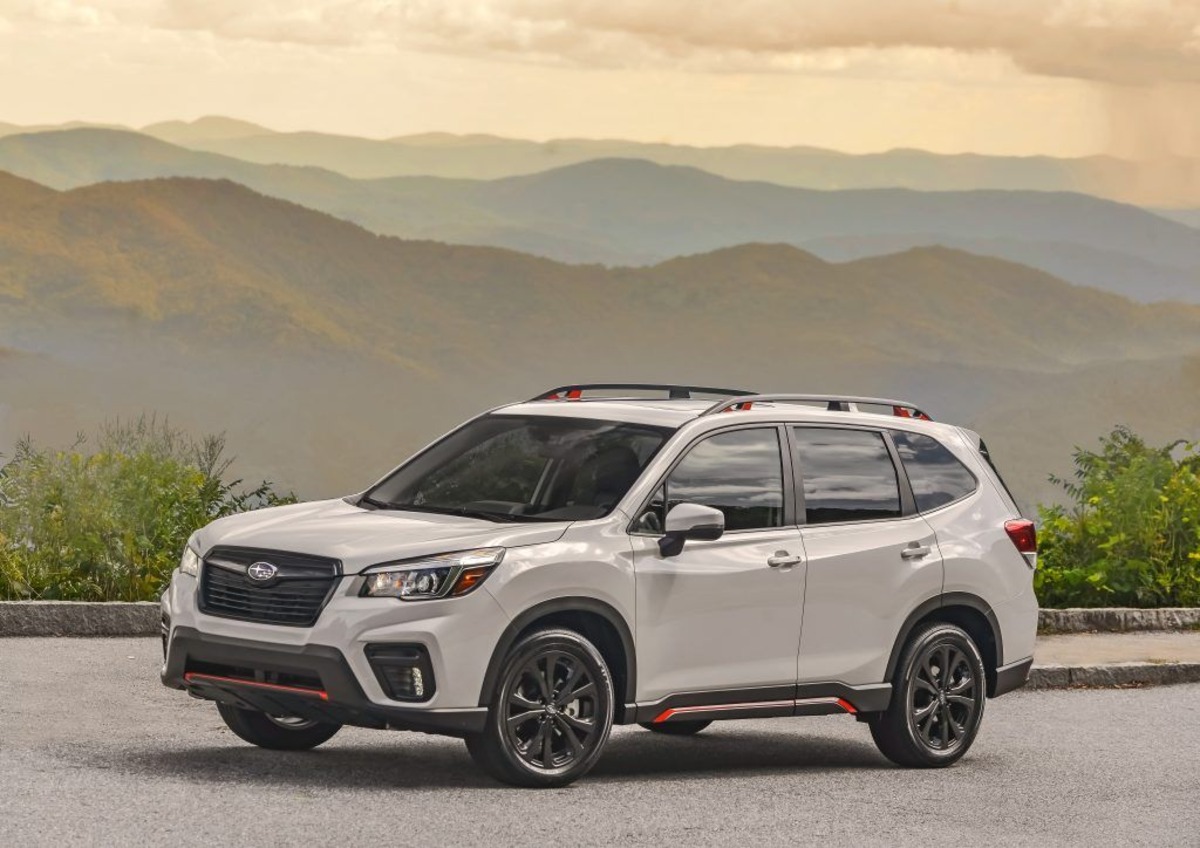
2. Subaru Forester
The Subaru Forester stands as a pillar of winter reliability for drivers who require a capable, practical SUV that excels in cold weather. It’s no surprise that the Forester is a top choice for many living in snowy climates, as its combination of features is finely tuned for winter challenges.
Like the Outback, the Forester boasts approximately 8.7 inches of ground clearance, which is ample enough to avoid getting stuck in deep snow or riding low over packed ice and uneven road surfaces.
The symmetrical all-wheel-drive system in the Forester is one of the most responsive in its class, dynamically shifting torque between wheels to maintain traction and prevent slippage in real time.
This system is paired with advanced stability control mechanisms that intervene to keep the vehicle stable during sudden maneuvers on slick roads, helping drivers avoid potentially dangerous situations. What truly sets the Forester apart in winter conditions is its balanced handling and driver-centric design.
Its compact dimensions provide nimbleness on narrow, snow-covered roads while still delivering a commanding seating position that offers excellent road visibility — a critical factor when assessing the surface ahead in snowstorms or fog.
The suspension is engineered to strike a balance between comfort and ruggedness, enabling the Forester to handle potholes hidden beneath ice or uneven snow banks without unsettling passengers.
The engine options, ranging from efficient naturally aspirated units to turbocharged powerplants in sportier trims, ensure that drivers have enough torque to confidently navigate uphill climbs and maintain momentum in slippery conditions.
Safety is a paramount concern for winter drivers, and Subaru addresses this in the Forester through its suite of driver assistance technologies. The EyeSight system, which includes adaptive cruise control, lane departure warnings, and automatic emergency braking, is especially valuable on icy highways where stopping distances increase and road conditions can change suddenly.
Heated front seats, side mirrors, and available heated rear seats are standard or optional across many trims, enhancing comfort and safety by ensuring windows and mirrors stay clear of ice and frost. The Forester also offers practical storage and cargo options for winter gear, from snow shovels to ski equipment, making it an ideal vehicle for families or adventurers who don’t want winter to limit their plans.
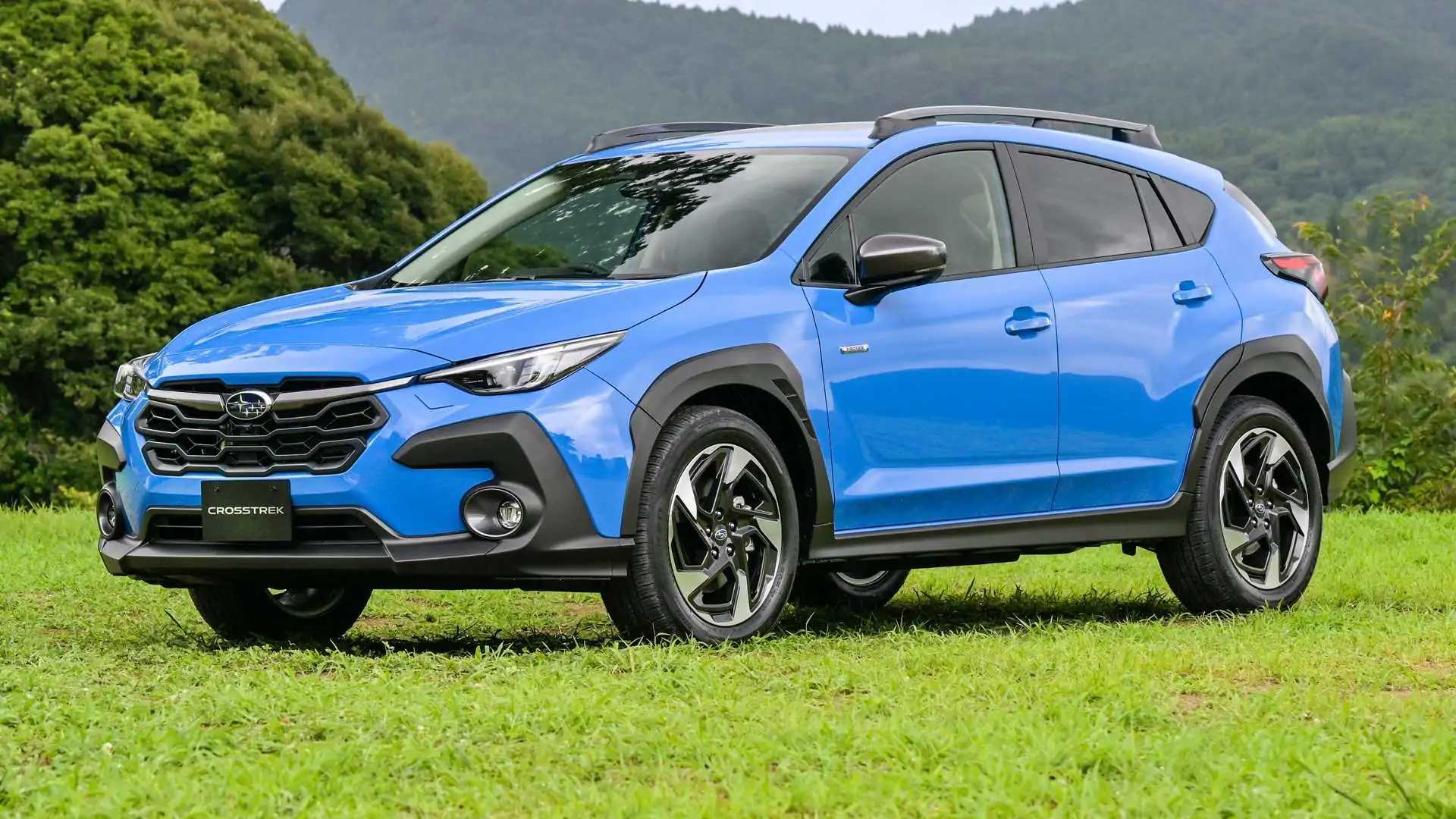
3. Subaru Crosstrek
The Subaru Crosstrek, though smaller than the Outback and Forester, punches well above its weight in winter conditions, making it a favorite for those who need a compact yet capable vehicle. Its 8.7-inch ground clearance, uncommon in many compact crossovers, gives it a decisive advantage over similarly sized competitors, allowing it to traverse snowy and uneven terrain with surprising ease.
What distinguishes the Crosstrek is the engineering of its chassis and drivetrain. The Crosstrek uses the signature Subaru Boxer engine, a horizontally opposed layout that lowers the vehicle’s center of gravity.
This design improves stability on icy surfaces by reducing body roll and enhancing grip during cornering or sudden lane changes, which are common challenges in winter driving.
The symmetrical all-wheel-drive system in the Crosstrek is finely tuned for a wide range of slippery conditions. It not only automatically distributes torque between front and rear wheels but can also modulate power side-to-side when cornering or navigating slippery curves, minimizing understeer or oversteer.
This sophisticated traction management instills confidence when driving through snow-packed urban streets or rural backroads covered in ice. The Crosstrek’s light footprint also means it heats up relatively quickly compared to heavier SUVs, which can be an overlooked but important factor in cold climates where warming the cabin promptly adds to driver comfort.
Subaru has also ensured that the Crosstrek’s interior and features are suited for winter use. Heated front seats are available on most trims, and heated mirrors help maintain visibility during freezing rain or snowstorms. The vehicle’s infotainment and safety technology systems are user-friendly and provide peace of mind on long winter drives.
With ample cargo space for winter gear despite its compact dimensions, the Crosstrek is ideal for city dwellers and outdoor enthusiasts who want a vehicle capable of handling unpredictable winter weather without the bulk of a larger SUV. This combination of agility, ground clearance, and advanced AWD makes the Crosstrek a standout choice in the cold-weather segment.
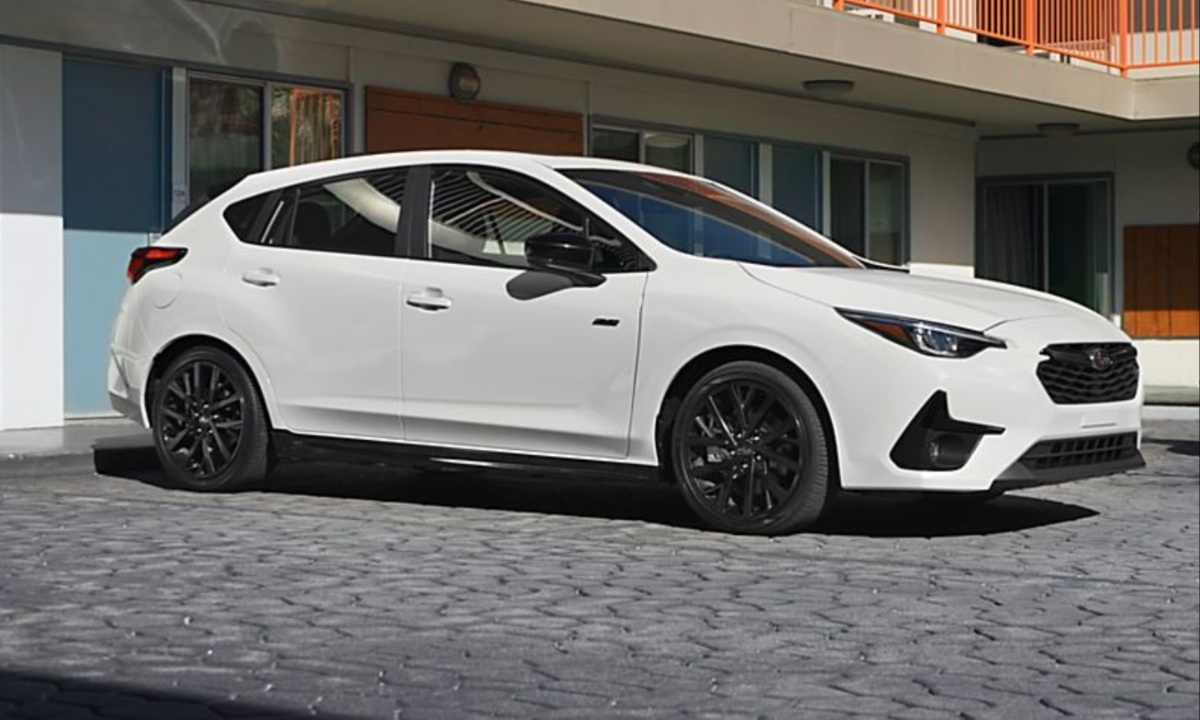
4. Subaru Impreza (AWD Models)
The Subaru Impreza, especially in its all-wheel-drive configurations, is an excellent winter vehicle for drivers who seek the maneuverability of a compact car combined with Subaru’s renowned traction capabilities.
Although the Impreza’s ground clearance is lower than Subaru’s crossovers at roughly 5.1 inches, it still handles winter conditions surprisingly well when paired with the right tires and cautious driving techniques.
The symmetrical AWD system ensures that power delivery is consistent and balanced, helping to minimize the risk of wheel slip on icy or snow-covered roads. While it may not be suited for deep snowdrifts or off-road winter trails, the Impreza performs admirably on city streets, suburban roads, and highways during winter months.
One of the Impreza’s strengths in cold weather is its relatively lightweight design, which contributes to improved fuel efficiency and easier handling compared to bulkier SUVs. This also means the car is generally easier to control on slippery surfaces because the driver can more precisely modulate steering inputs and throttle responses.
The vehicle’s suspension tuning balances comfort and control, providing a compliant ride that helps absorb minor road imperfections caused by frost heaves or partially melted snow. Additionally, the Impreza’s Boxer engine provides a low center of gravity, similar to other Subarus, which enhances stability during winter cornering or evasive maneuvers.
Subaru also makes winter life easier inside the Impreza by offering features such as heated front seats and heated side mirrors, which significantly improve comfort and visibility on cold mornings. The cabin is designed with good insulation to keep cold air out and warmth in, making it a cozy environment for daily winter commutes.
For drivers living in regions with moderate snowfall or icy patches, the Impreza AWD models represent a well-rounded, affordable, and dependable option that combines Subaru’s winter expertise with the practicality of a compact sedan or hatchback.
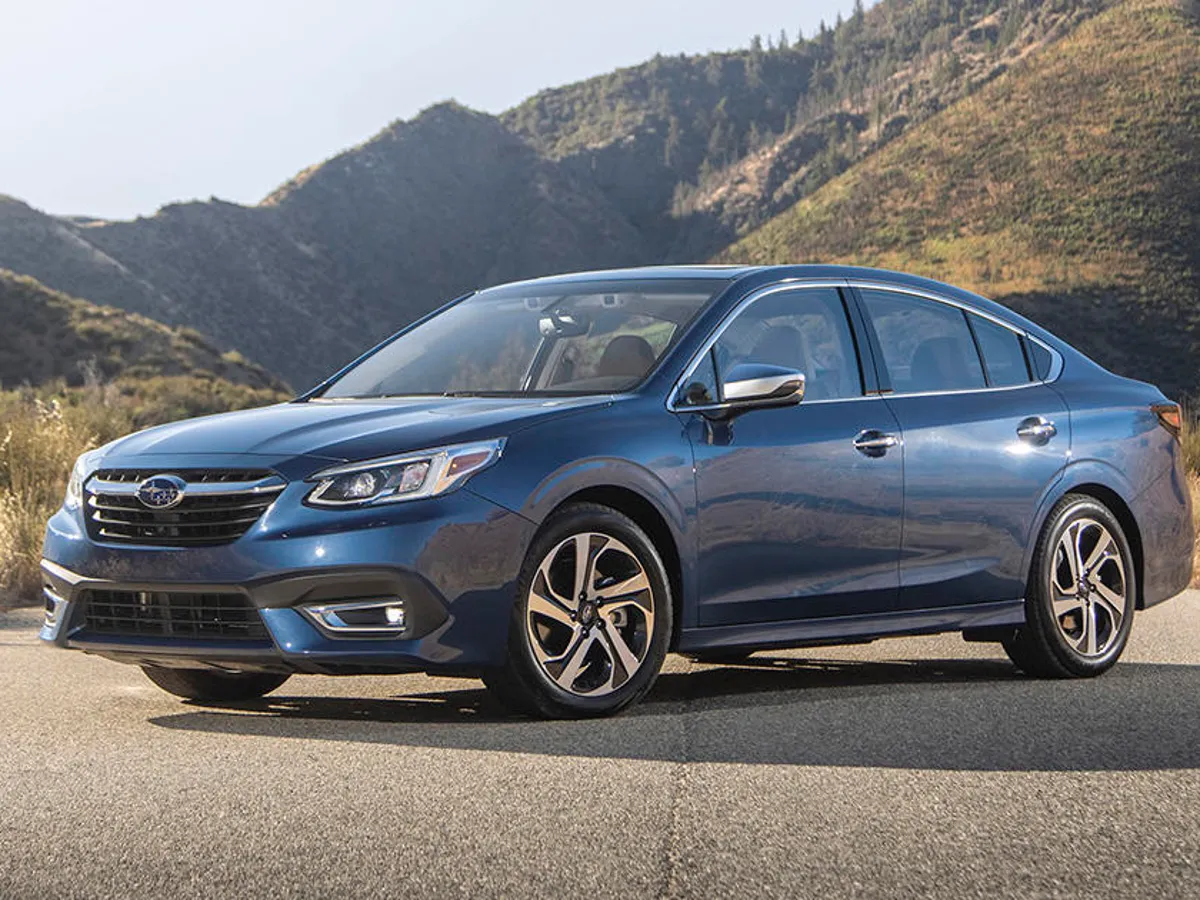
5. Subaru Legacy (AWD Models)
The Subaru Legacy is often praised for combining the refinement of a traditional sedan with Subaru’s exceptional all-wheel-drive system, making it a surprisingly capable option for winter drivers who prefer a more conventional car.
With a ground clearance of about 5.9 inches, the Legacy doesn’t possess the lofty stance of Subaru’s crossovers, but this height is still adequate to handle most winter road conditions, including snowy highways and slushy suburban streets. The Legacy’s symmetrical AWD system is finely calibrated to deliver torque dynamically between the front and rear wheels, improving traction and stability on slippery or uneven surfaces.
The Legacy’s turbocharged engine options provide ample low-end torque, which is invaluable for navigating steep snowy inclines or accelerating smoothly on icy roads without losing grip. Paired with a well-tuned suspension and stability control system, the Legacy offers a composed and predictable ride in winter conditions.
The sedan’s chassis and weight distribution are designed to maintain balance during sudden maneuvers, reducing the likelihood of skidding or loss of control. Its relatively long wheelbase adds to the vehicle’s stability at highway speeds in wintry weather, making it a comfortable and safe choice for long-distance winter travel.
Inside, the Legacy prioritizes occupant comfort in cold weather. Features like heated front seats, heated steering wheels, and dual-zone climate control help occupants stay warm during freezing commutes or long road trips. The cabin’s insulation and HVAC systems are engineered to efficiently retain heat, ensuring rapid warming even in the coldest temperatures.
Overall, the Subaru Legacy AWD models are well-suited for those who want a winter-capable vehicle with the handling characteristics of a sedan, providing a balanced blend of safety, comfort, and performance in cold weather.
5 Subaru Cars That Hate Cold Weather
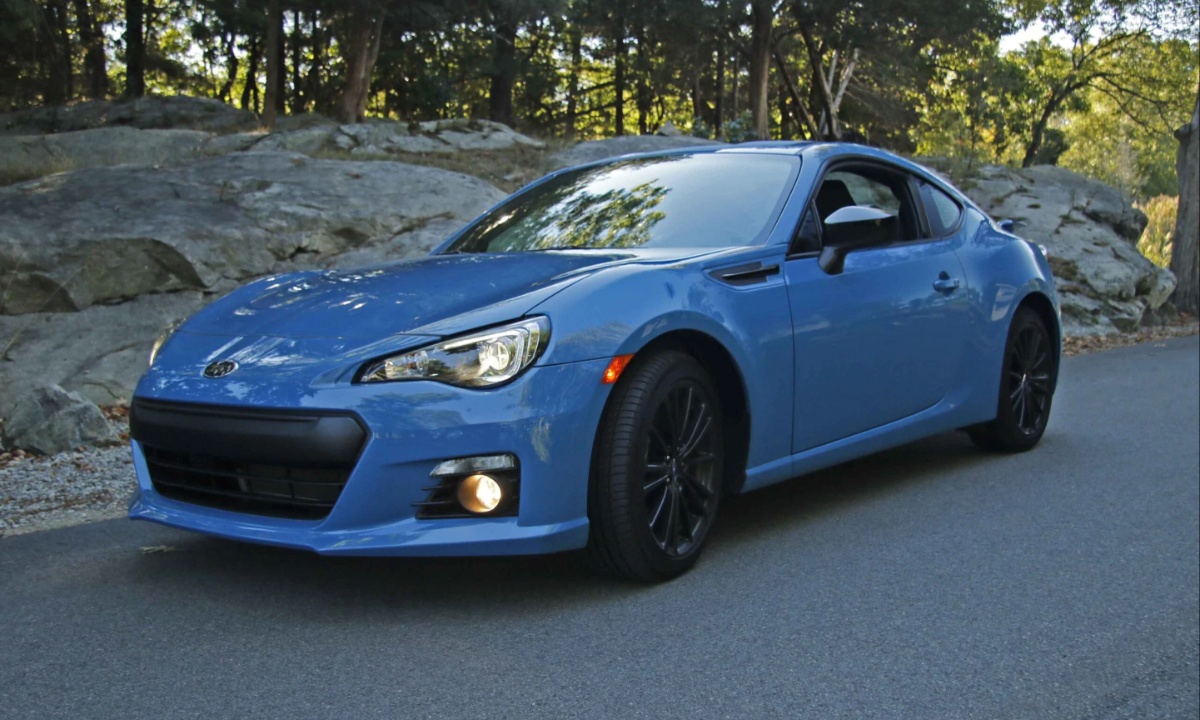
1. Subaru BRZ
The Subaru BRZ is a pure sports car designed with driving excitement in mind, but it’s one of the least winter-friendly vehicles in the Subaru lineup. Unlike Subaru’s signature all-wheel-drive models, the BRZ is strictly rear-wheel drive, which inherently puts it at a disadvantage on snow and ice.
Rear-wheel drive vehicles typically struggle in slippery conditions because the rear wheels, responsible for propulsion, have less weight over them compared to front-wheel or all-wheel-drive cars. This leads to poor traction and makes controlling the car on slick surfaces much more difficult, often resulting in wheel spin and fishtailing. In winter conditions, the BRZ requires a very cautious driving approach, or else it can quickly become a handful even for experienced drivers.
Beyond its drivetrain layout, the BRZ sits quite low to the ground, with a ground clearance of just around 4.9 inches, which makes it vulnerable to getting stuck in even moderate snow depths. This low clearance also means it’s prone to scraping on icy ruts, snowbanks, or frozen potholes commonly encountered in winter driving.
Additionally, the car’s lightweight construction, while advantageous for performance and handling in dry conditions, works against it in snow, where added weight helps improve tire grip on slippery roads.
The BRZ’s winter comfort features are also minimal compared to other Subarus. While recent models offer some heated seat options, many trims lack heated mirrors or heated steering wheels, which are essential for managing frost and maintaining warmth during freezing conditions.
Furthermore, the car’s performance-tuned suspension, designed for responsive handling on dry pavement, can feel harsh and unforgiving on cold, rough, or snowy roads. Altogether, these factors mean that while the BRZ excels on clear, dry roads and track days, it’s a poor choice for drivers who regularly face winter weather and snow-covered streets.
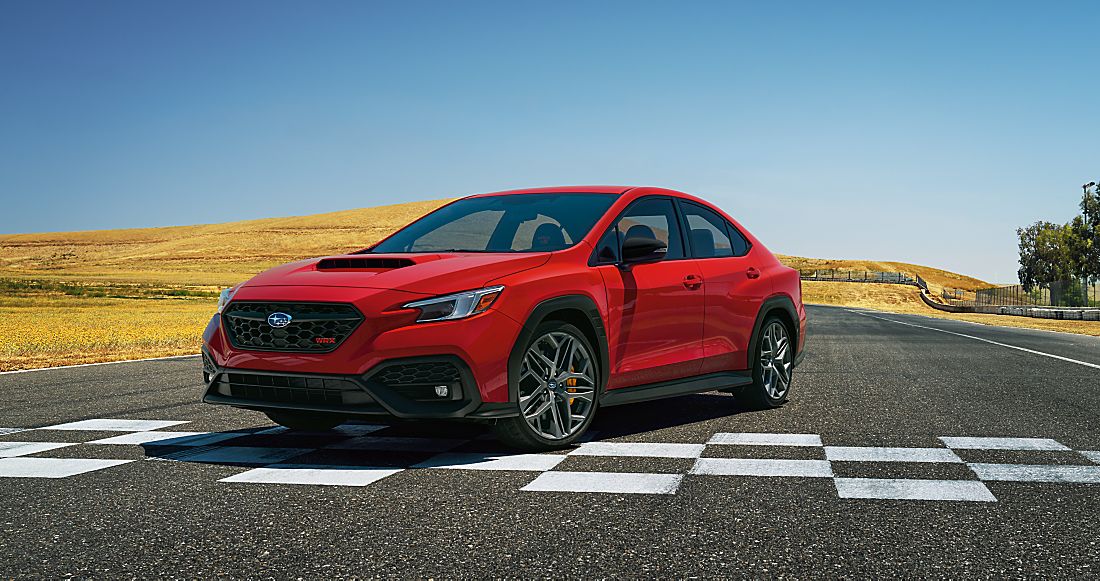
2. Subaru WRX (Older Models Without Advanced AWD Systems)
While modern Subaru WRX models come standard with symmetrical all-wheel drive that performs well in winter, earlier generations of the WRX or some base trims lacked the full suite of traction and stability enhancements that Subaru perfected over time.
Some older WRXs had less sophisticated AWD systems or relied on limited-slip differentials that didn’t always provide optimal grip in low-traction scenarios. These earlier WRX models were primarily engineered for rally-inspired performance, focusing on speed, handling, and power delivery rather than winter durability or driver comfort in cold climates.
One major drawback of older WRXs in winter is their aggressive suspension tuning. Designed to minimize body roll and maximize road feel on dry pavement, the stiff suspension transmits road irregularities harshly, which becomes uncomfortable and sometimes hazardous on icy or snow-covered roads. The low-profile, performance-oriented tires that often come standard with WRXs are also a poor match for snow and ice, reducing grip drastically unless swapped for dedicated winter tires.
In addition to mechanical shortcomings, many older WRX models did not include advanced driver aids such as traction control or stability control, features that are now critical for safely navigating slippery winter roads.
Their cabins were also less insulated and lacked heated features like seats or mirrors, which can make winter driving less comfortable. While passionate Subaru enthusiasts may retrofit older WRXs for winter, the reality is that these cars require extra preparation, skill, and caution to be safe and effective in snowy or icy conditions, making them generally ill-suited for cold-weather driving compared to newer Subaru models.
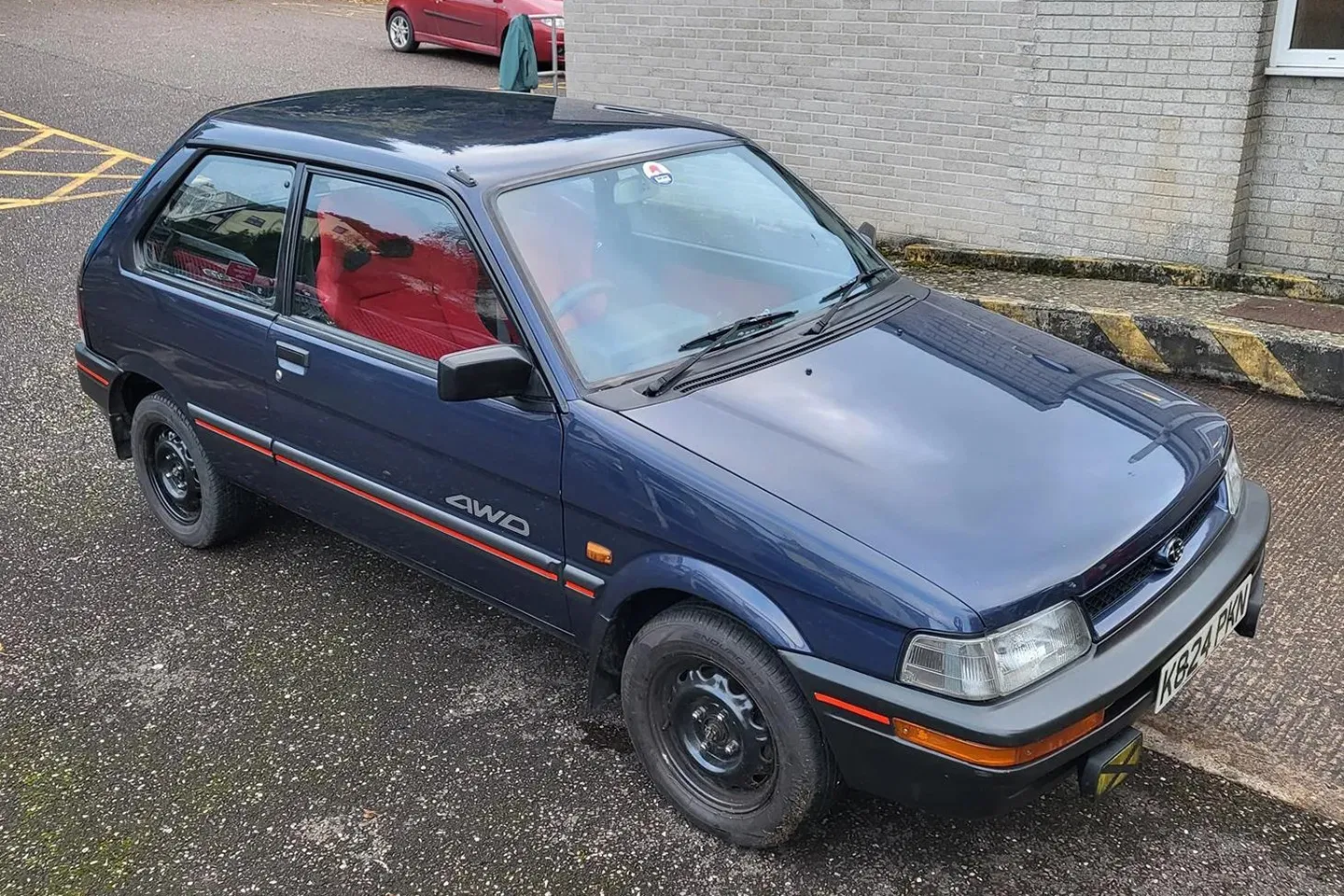
3. Subaru Justy (Early Models)
The Subaru Justy, a small hatchback produced primarily in the 1980s and 1990s, is a classic example of a vehicle that struggles in modern winter conditions. Although some versions of the Justy featured all-wheel drive, the technology and systems were primitive by today’s standards.
The Justy’s AWD system was often part-time and mechanically simplistic, lacking the seamless torque distribution, traction control, and stability management systems that are now standard on Subaru’s newer models. This meant that in icy or snowy conditions, the Justy’s AWD engagement was inconsistent and less effective at preventing wheel spin or maintaining control.
Ground clearance on the Justy was minimal—usually well below 6 inches, making it difficult to navigate even light snow accumulation without getting stuck or scraping.
The vehicle’s small size and lightweight body, while beneficial for fuel economy, also meant less traction and poorer stability on slippery surfaces. In many cases, drivers had to rely heavily on skill and careful throttle modulation to maintain forward momentum on ice or packed snow.
Another significant issue with the Justy in cold weather was its basic heating and insulation. Early models had limited cabin heating efficiency, often leaving occupants cold in harsh winter conditions. The lack of heated seats, mirrors, or modern defrosting technology meant drivers faced reduced visibility and comfort during long winter drives.
While the Justy was affordable and economical for urban commuting, its combination of outdated AWD technology, low clearance, and poor winter comfort features makes it an impractical choice for snowy climates today.

4. Subaru Baja
The Subaru Baja is an unusual hybrid between a crossover and a pickup truck, produced in the early 2000s. While it did come equipped with Subaru’s symmetrical all-wheel-drive system, the Baja’s design introduced unique challenges that made it less ideal for cold-weather conditions.
The Baja’s ground clearance was lower than many of Subaru’s popular crossovers, usually hovering around 7.5 inches, but its weight distribution, owing to its pickup bed at the rear, made the rear axle lighter, which can negatively impact traction on slippery surfaces.
This lighter rear end, combined with the Baja’s unique chassis setup, sometimes caused the vehicle to feel unsettled or prone to sliding on ice or packed snow. While the AWD system attempted to compensate, it couldn’t fully counteract the physics at play in winter conditions.
Drivers reported occasional oversteer or instability during winter cornering maneuvers, which could lead to less confidence on snow-covered roads. The Baja’s suspension tuning, inherited partly from Subaru’s earlier SUV platforms, was also not optimized for winter handling, resulting in a rougher ride and reduced traction on frozen, uneven roads.
On the comfort front, the Baja was somewhat lacking compared to other Subaru models designed with winter driving in mind. Heated seats and mirrors were not always standard, and the cabin insulation was average, leading to longer warm-up times and less comfort during frigid temperatures.
The pickup-style bed, while versatile for hauling, also meant less protection for rear wheels and exposed components to ice and snow. All these factors make the Subaru Baja a less-than-ideal choice for drivers seeking a reliable, comfortable vehicle to brave cold winters.
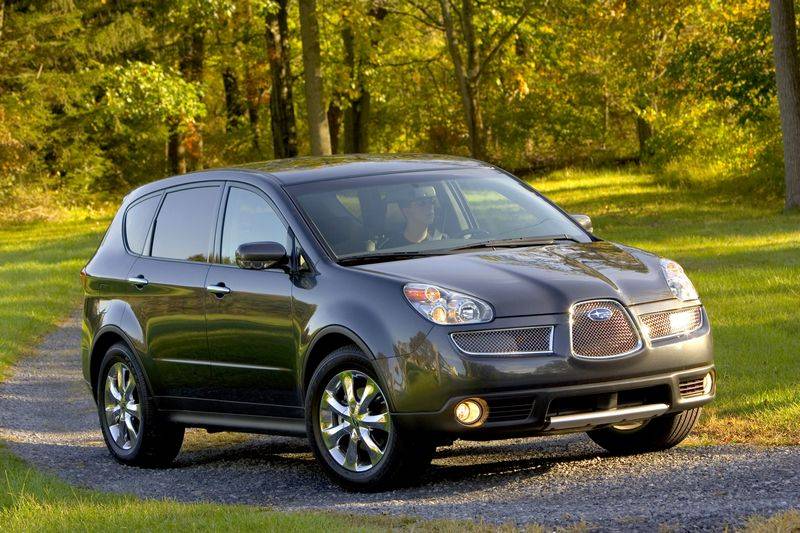
5. Subaru Tribeca
The Subaru Tribeca, produced from 2005 to 2014, was Subaru’s attempt to enter the luxury midsize SUV market, but it has a mixed reputation when it comes to winter performance. Although it came standard with AWD, the Tribeca’s system was not as advanced or responsive as Subaru’s later symmetrical AWD platforms, making it less effective at maintaining traction on icy or snow-covered roads.
The vehicle’s weight, which was heavier than many of its competitors, also worked against it by increasing stopping distances and reducing agility on slippery surfaces.
Ground clearance was another sticking point for the Tribeca; at about 7.3 inches, it was lower than the Forester or Outback and insufficient for tackling deep snow or thick ice buildup.
This lower clearance meant the vehicle was more prone to bottoming out on snowbanks or getting stuck in heavy snowdrifts. The suspension tuning was criticized for not providing the smoothest ride in winter conditions, as it sometimes transmitted bumps and harsh impacts from icy, uneven roads directly to the cabin.
From a comfort standpoint, the Tribeca’s heating systems were adequate but lacked many of the modern conveniences that other Subaru models offer. Heated seats, heated steering wheels, and heated mirrors were either optional or absent on lower trims, which could make cold mornings uncomfortable for occupants.
The Tribeca’s interior insulation also wasn’t as effective at retaining heat, resulting in longer warm-up times. Combined with the less nimble handling and traction issues, the Tribeca stands out as one of the less winter-ready Subaru SUVs, making it better suited for milder climates or urban driving rather than harsh winter environments.
Also Read: 5 Cars That Keep Working in Texas Heat and 5 That Overheat Instantly
Winter driving demands respect, preparation, and above all, the right vehicle. Subaru’s legacy as a manufacturer of reliable, winter-capable cars is well deserved, with many models engineered to tackle snow, ice, and freezing temperatures head-on.
The five Subaru vehicles that love cold weather — including the Outback, Forester, Crosstrek, Impreza AWD, and Legacy AWD — represent the best of the brand’s ability to combine technical innovation, practical design, and winter comfort features.
These cars offer drivers exceptional traction through advanced symmetrical all-wheel-drive systems, high ground clearance to navigate deep snow, and interior amenities that keep occupants warm and safe. For those living in snowy climates or who frequently encounter winter conditions, these models stand out as reliable, confident choices that minimize winter driving stress and maximize safety.
However, Subaru’s range is diverse, and not every vehicle shares this winter-ready DNA. The models less suited for cold weather — such as the rear-wheel-drive BRZ sports car, older WRX models without advanced AWD, the early Subaru Justy, the Baja pickup hybrid, and the Tribeca SUV — illustrate the limitations that design priorities can impose on winter capability.
Factors such as rear-wheel drive, low ground clearance, less sophisticated AWD systems, and minimal heated or defrosting features reduce these vehicles’ effectiveness and comfort in snowy or icy conditions.
While these cars have their own strengths, such as sporty handling, fuel efficiency, or unique styling, they often require extra caution, winter tire upgrades, or even avoidance during harsh weather, underscoring the importance of matching vehicle capabilities to environmental demands.
Ultimately, the right Subaru for winter driving depends on your needs and priorities. If your goal is to confidently conquer snow-covered roads, maintain traction in icy patches, and keep your family comfortable during frigid commutes, the models engineered for cold weather should be your top consideration.
The benefits extend beyond performance; they contribute significantly to safety by reducing the risks of accidents caused by loss of control or poor visibility. On the other hand, if you value sporty driving dynamics, compact size, or lower cost and live in an area with mild winters, the less winter-oriented Subarus might still serve you well with some adjustments.
In summary, Subaru offers a spectrum of vehicles tailored to different lifestyles and driving conditions, but their winter performance varies considerably. By understanding which models embrace cold weather and which struggle with it, drivers can make better-informed decisions and avoid unexpected challenges.
Whether you choose a rugged Outback that revels in the snow or a sleek BRZ best reserved for dry roads, knowing your vehicle’s winter strengths and weaknesses is crucial. With this knowledge, you can navigate the season confidently, turning winter driving from a daunting ordeal into an adventure you can handle with Subaru’s trusted engineering backing you every mile of the way.
